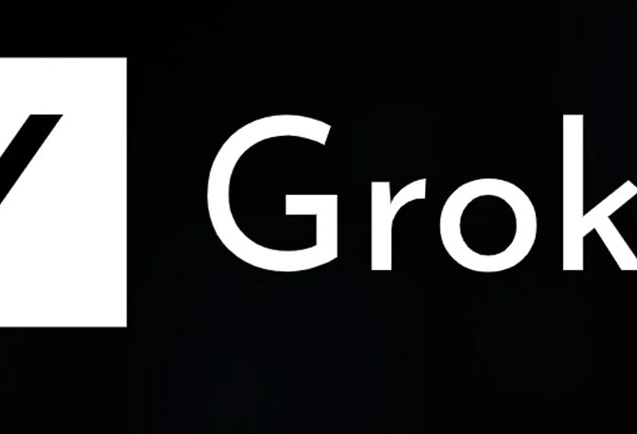Elon Musk’s AI venture xAI is teaming up with federally regulated prediction market Kalshi, linking its Grok chatbot with event-based trading. The aim? Make betting on real-world events smarter — and potentially more accurate — with real-time AI analysis.
It’s not just another AI partnership. This move connects Musk’s conversational bot with a financial platform approved by the U.S. Commodity Futures Trading Commission (CFTC), a rare intersection between artificial intelligence and federally regulated markets.
Betting on the Future, Literally
Kalshi isn’t your average startup throwing ideas at the wall. The company is the first federally regulated exchange dedicated to prediction markets, and it lets people place real-money bets on everything from inflation numbers to the next U.S. president.
Now, with Grok in the mix, things could get even more interesting.
xAI’s chatbot will analyse live news events, historical trends, and macroeconomic signals to help Kalshi users interpret markets better. Think of it as having an over-caffeinated analyst working 24/7, minus the salary.
It’s the kind of pairing that makes headlines — not just for the names involved but because it represents a bigger trend: AI going head-to-head with Wall Street brains in interpreting data and forecasting outcomes.

What Exactly is Kalshi, and Why Does it Matter?
Kalshi, co-founded by MIT grads Tarek Mansour and Luana Lopes Lara, launched with a bold premise: let everyday people trade on “what ifs.” Will inflation rise next month? Will the Fed hike rates again? Will a government shutdown occur before the end of the year?
Unlike crypto betting markets and grey-area platforms, Kalshi operates under full CFTC regulation. That makes it both legal and — more importantly — trustworthy to institutional traders and finance professionals.
Here’s a quick look at what sets Kalshi apart:
-
Federally Regulated: CFTC-approved since 2021.
-
Market Diversity: Over 100 markets ranging from economic to geopolitical events.
-
Accessibility: Targets both retail and institutional users.
This isn’t just Silicon Valley playing roulette with headlines. It’s serious speculation with structure.
Musk’s Bigger Play in AI
Elon Musk launched xAI in 2023 with one clear goal: build “truth-seeking” artificial general intelligence. Grok, the company’s chatbot, was designed to compete with ChatGPT — but with a twist of sarcasm and a tendency to “tell it like it is.”
Until now, Grok’s most high-profile integration has been inside X (formerly Twitter), offering subscribers a chat companion to digest news and trends. But this Kalshi move shifts the scope dramatically.
Musk is essentially betting that Grok can think like a Wall Street analyst — or better yet, outthink them.
Only time will tell whether it’s up to the task.
How This Could Disrupt Traditional Finance
Bringing AI into the prediction markets isn’t just novel — it’s potentially disruptive.
In a world where hedge funds rely on armies of analysts and layers of Excel sheets, AI bots like Grok could level the playing field for average traders. Real-time, always-on data parsing? That’s not a tool — that’s a full arsenal.
But it’s not all smooth sailing. The financial industry has already shown signs of unease about AI’s role in market decision-making, especially when paired with real money. Regulators may scrutinise how Grok presents information and whether it skews user expectations.
Still, it’s a sign of where things are headed. Human judgement isn’t being replaced — it’s being supplemented, fast.
Prediction Markets Are No Longer Fringe
For years, prediction markets lived in the shadow of regulatory uncertainty and philosophical debate. Were they gambling? Were they tools for truth discovery? Academics loved them; politicians didn’t.
But times have changed.
Since Kalshi’s approval, the idea of speculating on real-world outcomes has gained traction. And institutions are watching.
| Market Type | Example Questions | Potential Impact |
|---|---|---|
| Monetary Policy | Will the Fed raise rates in September? | Influences bond markets |
| Politics | Will Biden win re-election? | Affects global policy outlook |
| Economics | Will inflation exceed 4% next quarter? | Impacts investor strategies |
Add Grok’s capabilities into this mix and you’re not just trading on gut feeling anymore.
Critics Aren’t Staying Quiet
Some experts are waving caution flags.
One concern? That AI-generated analysis could subtly nudge user behaviour — especially if Grok’s interpretations are taken as predictions rather than suggestions.
Another issue is scalability. Grok has been trained primarily on data from social platforms and online sources. While that’s useful, financial forecasting also relies heavily on proprietary data and nuanced interpretations that go beyond headline scanning.
Still, early users seem enthusiastic. And xAI’s involvement suggests this isn’t a pet project — it’s part of a strategic shift to embed AI more deeply into real-world economic systems.
So, What Now?
The deal is still fresh. No details yet on how quickly Grok will be integrated into Kalshi’s interface, or whether it’ll be a paid add-on for premium users. But the hype machine is definitely switched on.
xAI posted the announcement on X, calling it a partnership between “two of the fastest-growing companies in America.” That’s bold. But it’s Musk, so no surprise there.
If nothing else, this collaboration signals a growing appetite to mix AI with real-dollar decision-making — and not just for fun. The lines between tech, media, finance, and public discourse keep blurring.
And Grok? Well, it might just be the first chatbot you bet with — not just chat to.
Leave a Reply